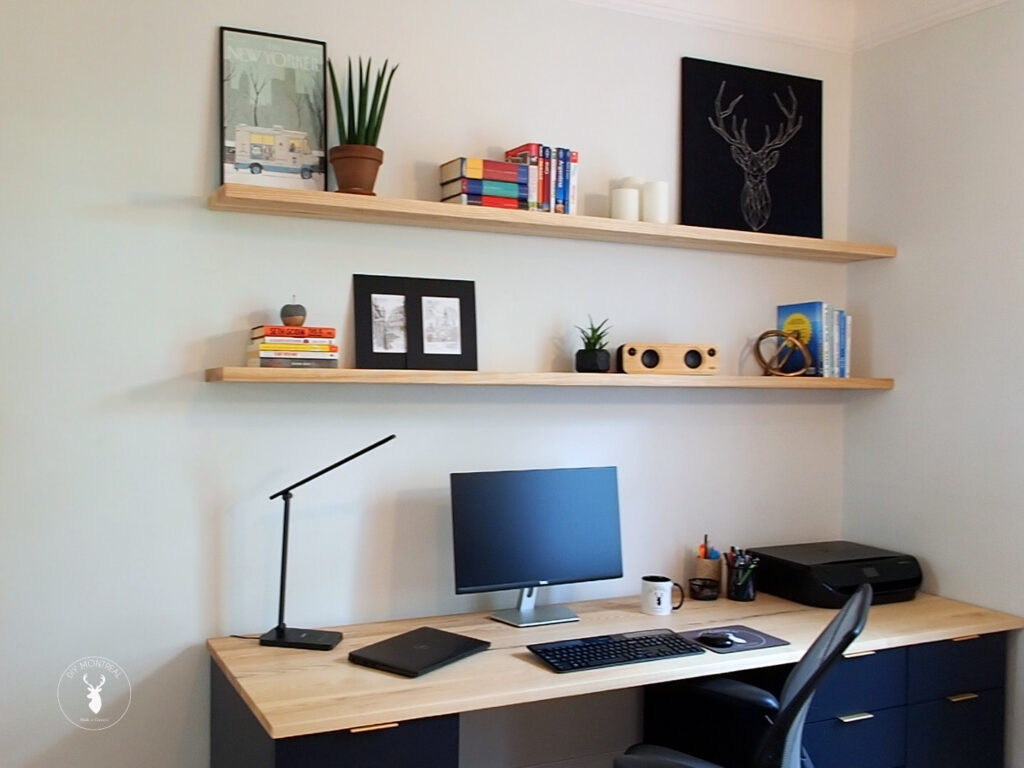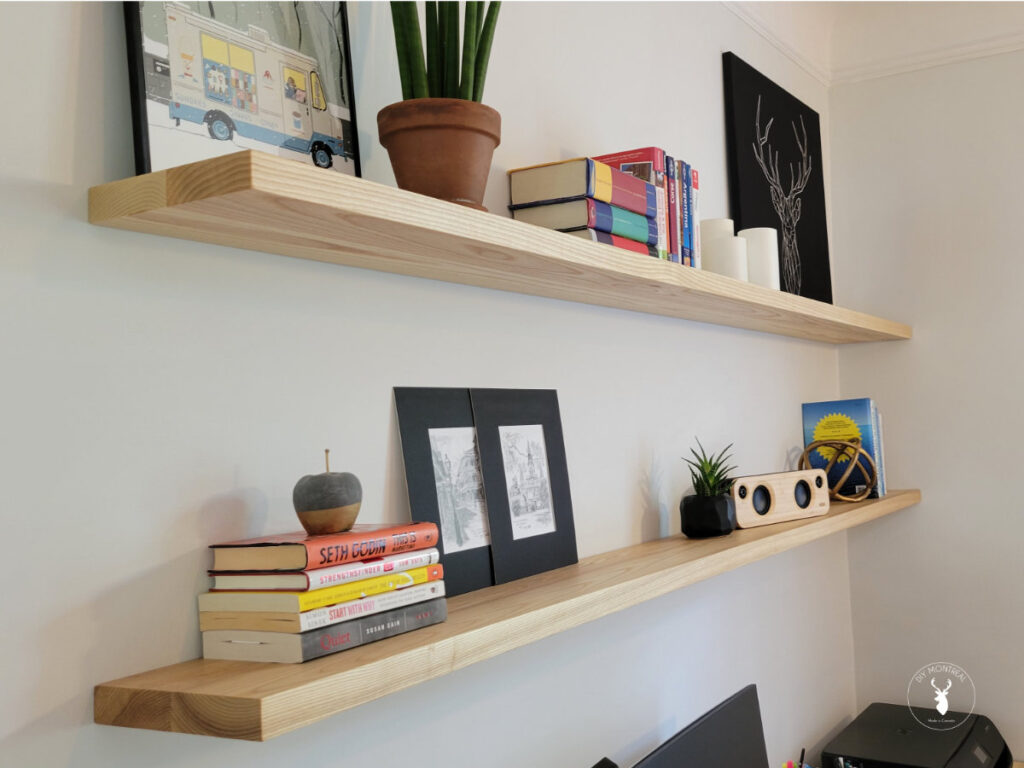Just over a year ago, I built a desk from scratch for my home office. I built a set of drawer cabinets out of plywood and added a solid ash wood desk top. I’ve been meaning to build a set of matching floating shelves for over a year now but seem to keep putting it off.
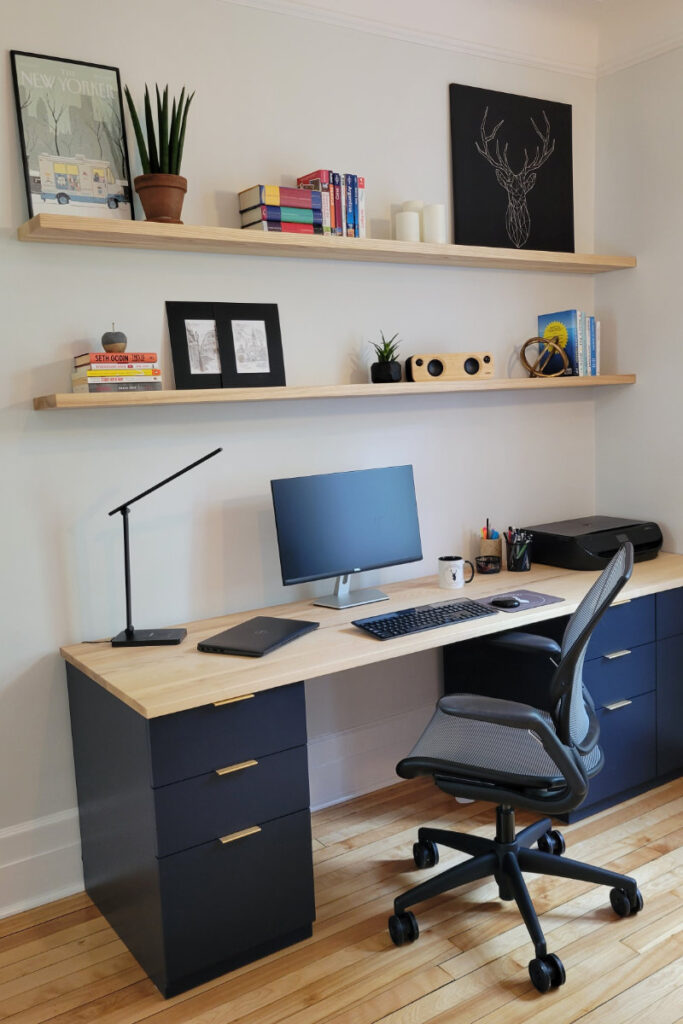
Deep down, I think I dread hanging things on the wall. I always get nervous and feel like the thing – whatever it is – will ultimately fail and crash down to the floor. It’s time to get over those fears and overengineer some floating shelves to compensate!
Tools and Materials
How to Build and Install Solid Wood Floating Shelves
Step 1: Build a Floating Shelf from Solid Wood
There are many ways to build floating shelves and reasons for picking one method over another. I wanted to build mine out of solid ash wood to match my custom built ash wood desk. I also wanted relatively thin shelves, not the thick bulky style you typically see.
I milled up the rough lumber using my jointer and planer until I had 4 boards roughly 1-3/8 inches thick by 4 inches wide and just over 7 feet long.
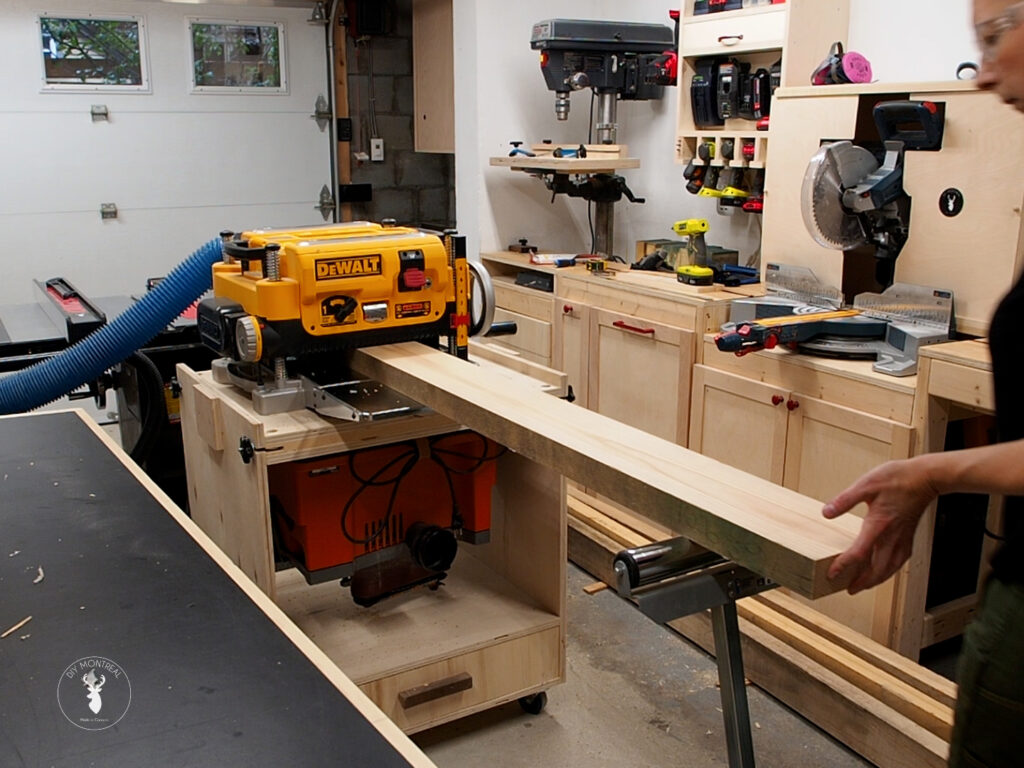
Next I glued and clamped the boards together in pairs to form the shelves. Once the glue had dried, I ran them trough the planer again to get them to their final thickness. Then used my track saw to square up the ends and cut them to their final length.
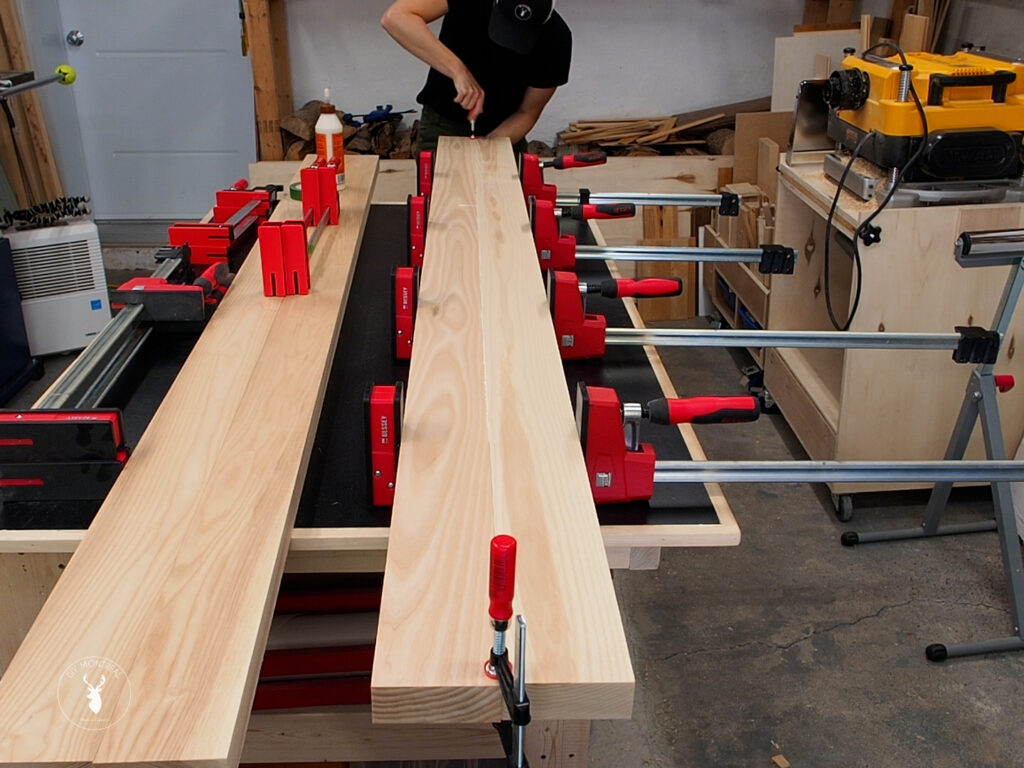
Before applying a finish I sanded with 80-grit, 120-grit and finally 220-grit. I’m using the same finish that I used on my desk so they’ll match and that’s Osmo polyx-oil. I just love how easy it is to apply. I like to use a plastic spreader to flood the surface, then simply wipe it off and buff it with a clean cloth. Two coats is all that’s needed.
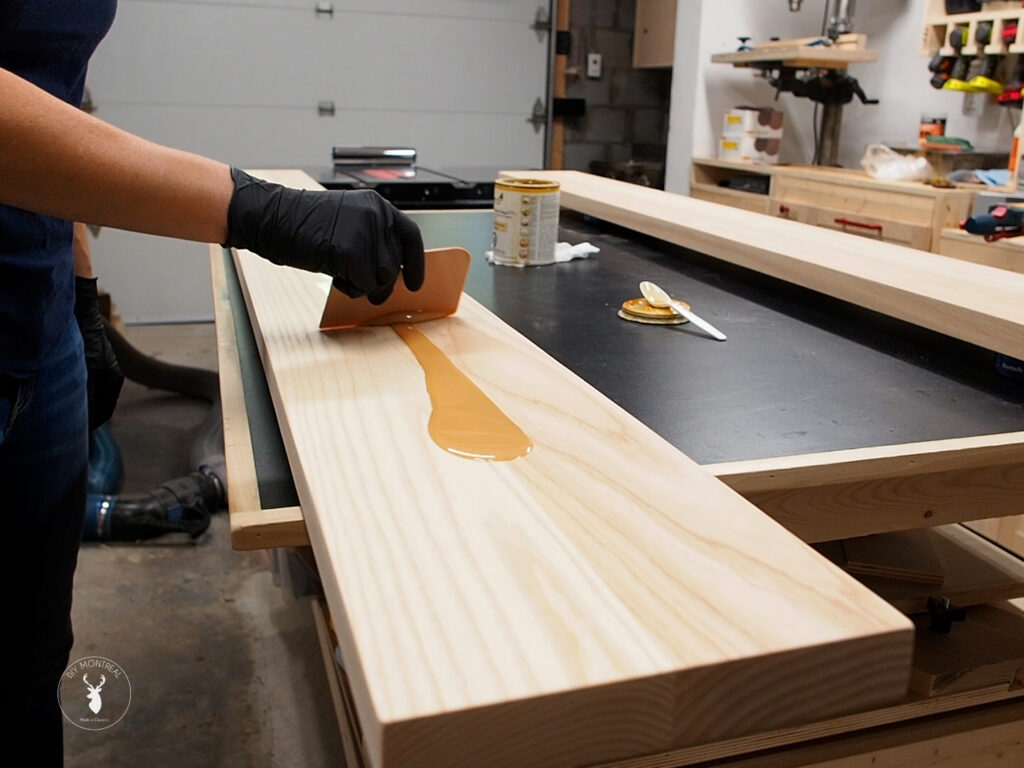
Step 2: Install Floating Shelf Hardware
After much research, I chose to use these floating shelf support brackets. Why? Well, robustness for one. A single pair of brackets can support 100+ lbs and each extra bracket adds 25 lbs more capacity. Another good reasons is that you can anchor each bracket independently into your studs. And finally, they are designed for a shelf thickness of 1-⅛ to 1-¼ inch which will match the thickness of my desk below.
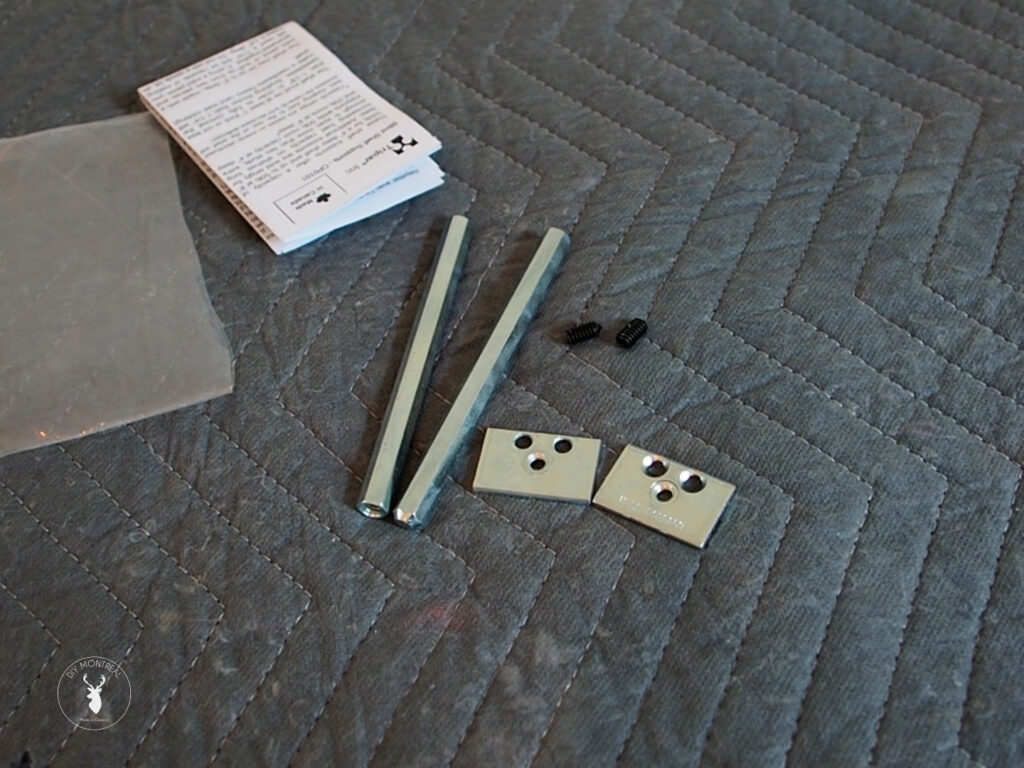
Roughly mark the height of the shelves using some painter’s tape. This will give you a visual reference and get a feel for the overall look. Then use a laser or 4-foot level to mark a line on the tape the full span of the shelf’s width.
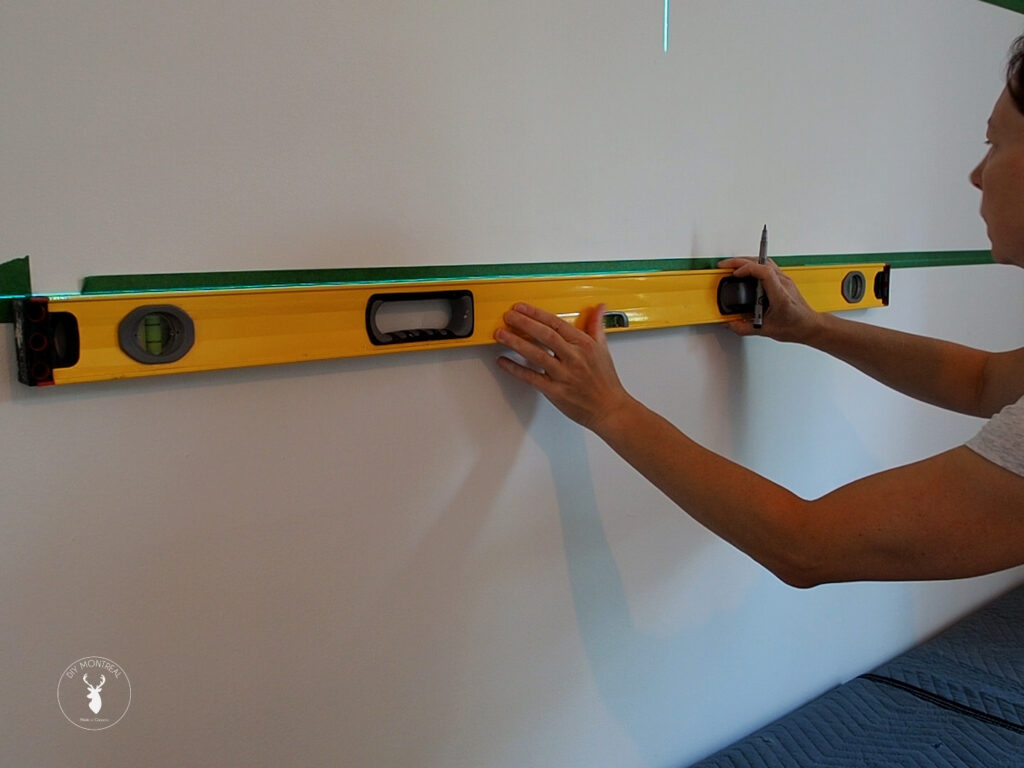
Locate each stud along that line using a stud finder. Franklin’s deep scan stud finder works amazingly if you have plaster walls like I do. It’s best to use one shelf bracket per stud to maximise the shelf’s capacity.
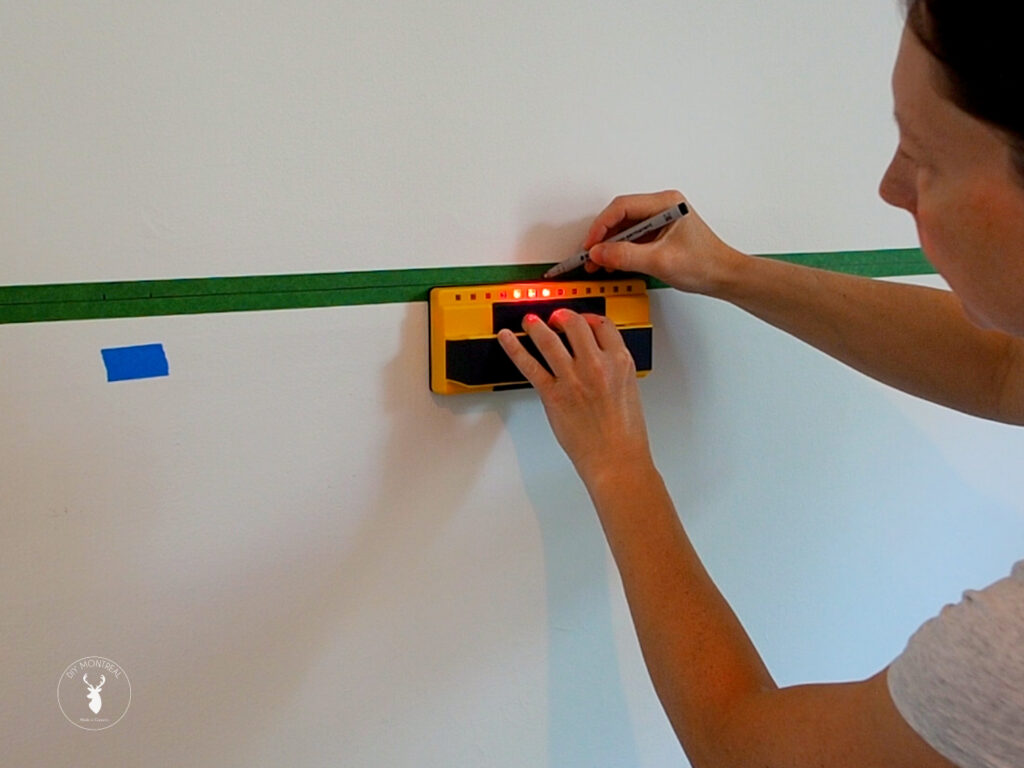
Position the shelf hardware mounting plate on the line across each stud and mark the screw holes. Then drill pilot holes using a 1/8 drill bit. Remove the tape and secure all of the mounting plates to the wall using 2-inch screws or longer. Then simply screw on the set screw followed by the shelf pin.
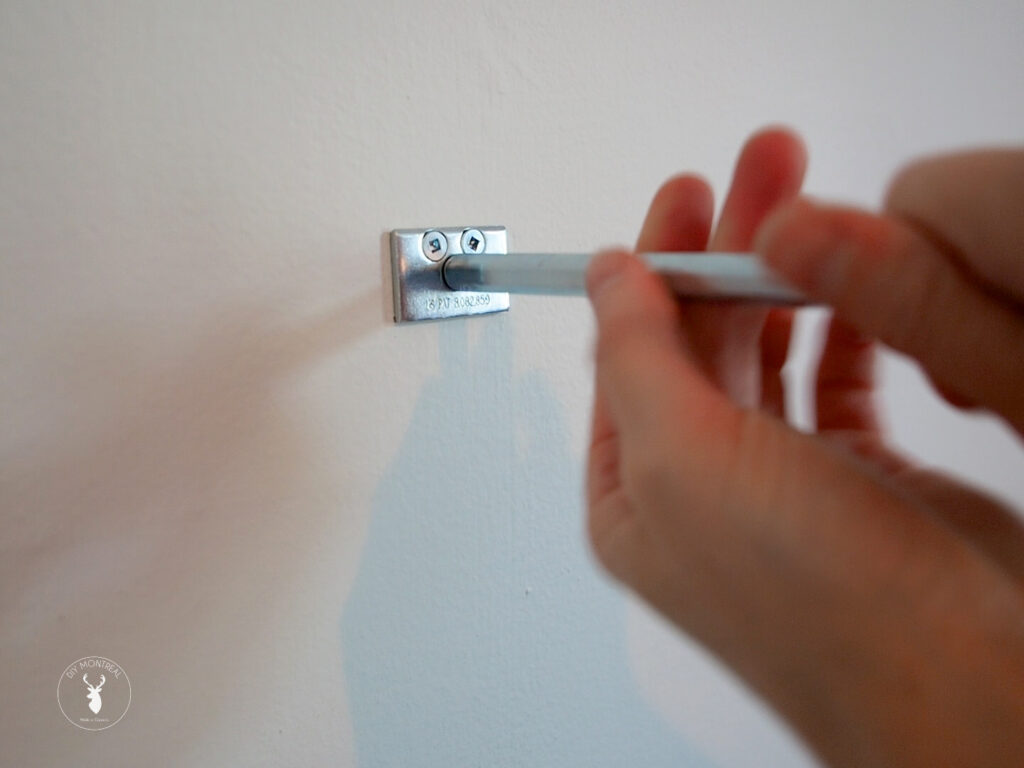
Step 3: Prepare Shelf for Installation
Now that all the floating shelf brackets are installed, drop the shelf onto them and push it all the way back against the wall. Line it up exactly where you want it to be mounted. Then use a small square to mark each side of the pin onto the bottom side of the shelf.
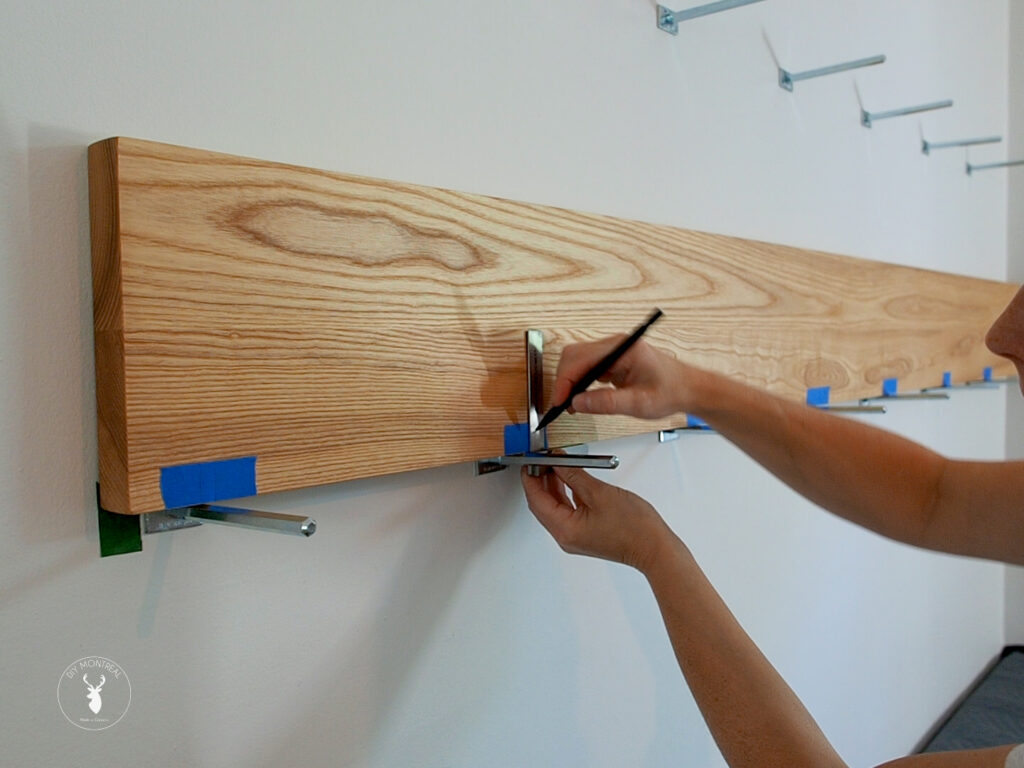
The lines can now be transferred onto the back edge of the shelf. Trace an ‘X’ between the lines to find the center point. It’s crucial that the holes be perfectly plumb so I’ll use a portable drill guide to drill the holes for the shelf hardware.
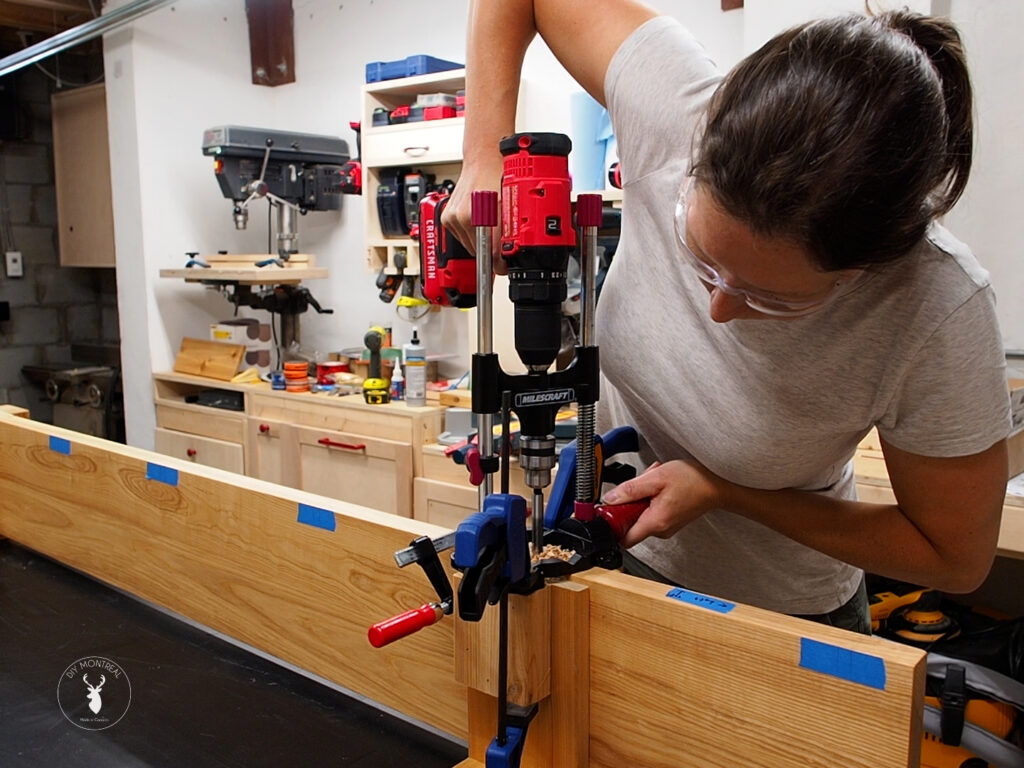
Only a short 7/16 bit will fit into the drill guide, so the holes will need to be finished off using a longer drill bit that will reach 5-1/4-inch deep. Tip: If you have a corded drill, use it! Drilling these holes with a cordless drill takes considerable time and effort.
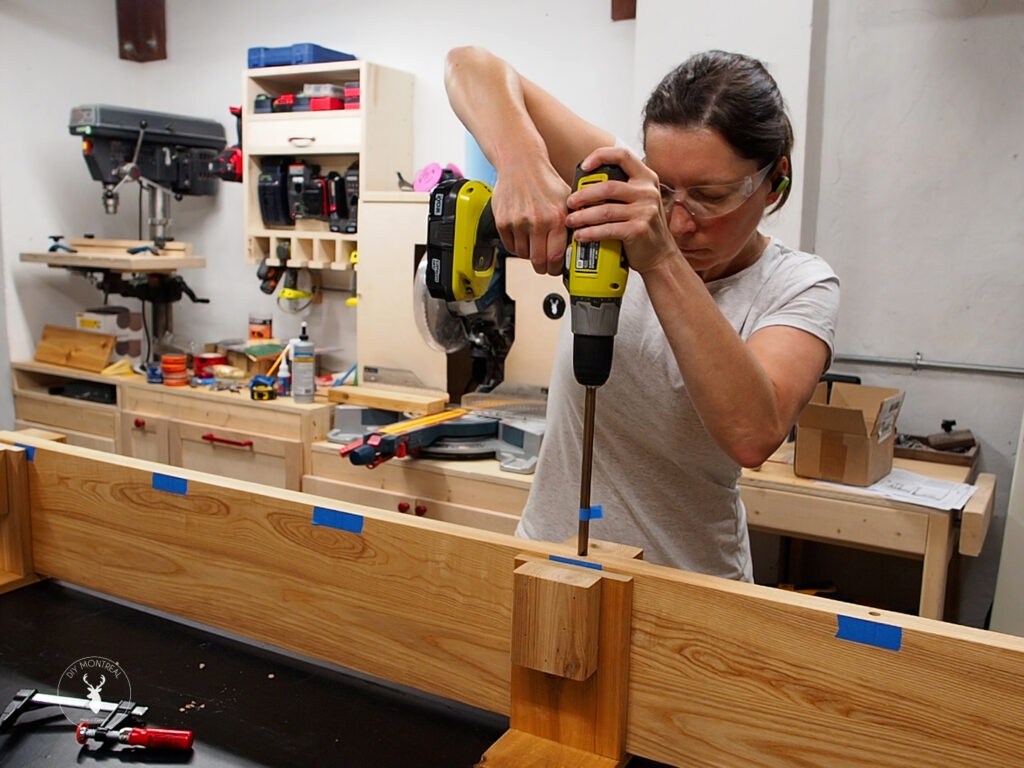
Chiseling out the back of the shelf to countersink the hardware is optional, but definitely recommended to complete the look. This will allow the shelf to sit flush up against the wall. A chisel is the recommended method for doing this, but I came up with another solution to save some time (and frustration as my chiseling skills aren’t up to par!).
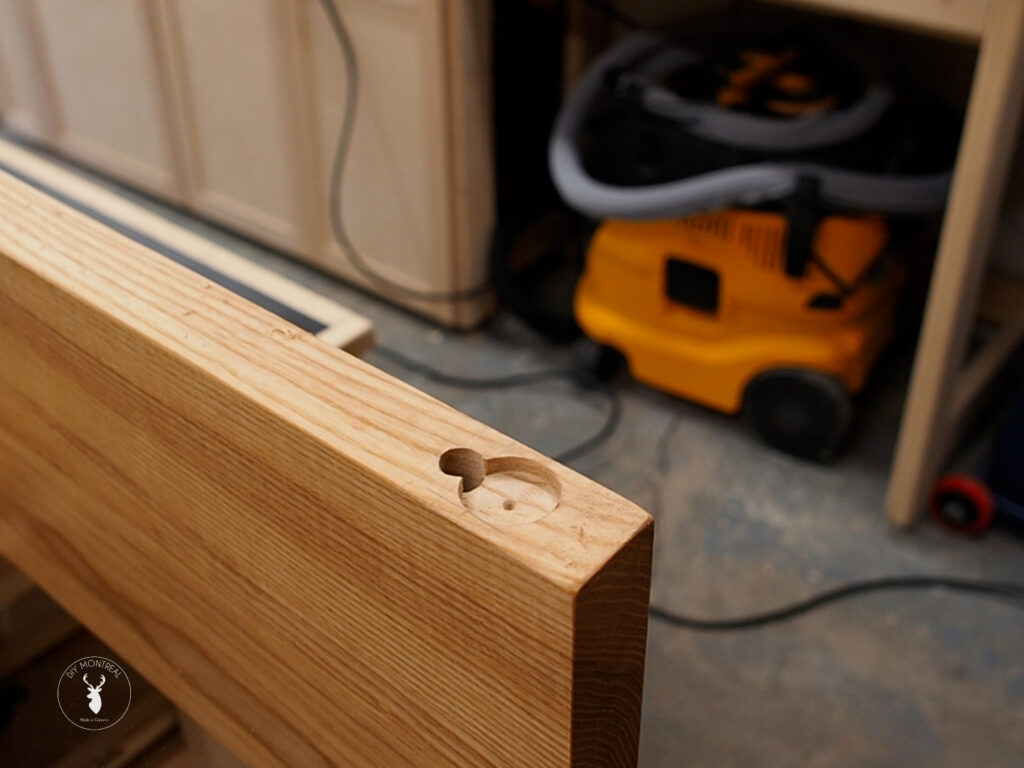
Instead, a router table can be used with a straight bit to route a channel along the back of the shelf. I first drilled relief holes on each end of the backside of the shelf using a Forstner bit. These will act as a starting/stopping points for the bit.
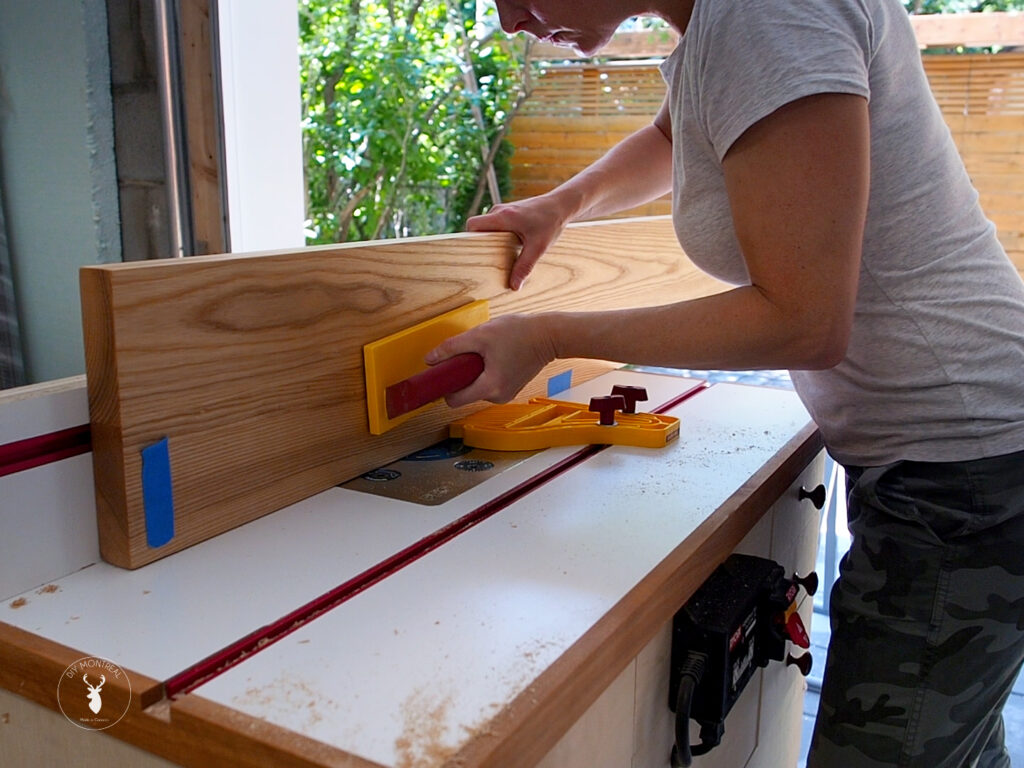
After firing up the router table, I’ll gently lower the shelf into the first hole, then push the shelf all the way though until I reach the second hole. Then turn off the router. Now flip the board around so the opposite face is against the fence, and repeat. This will create a perfect groove to conceal the hardware.
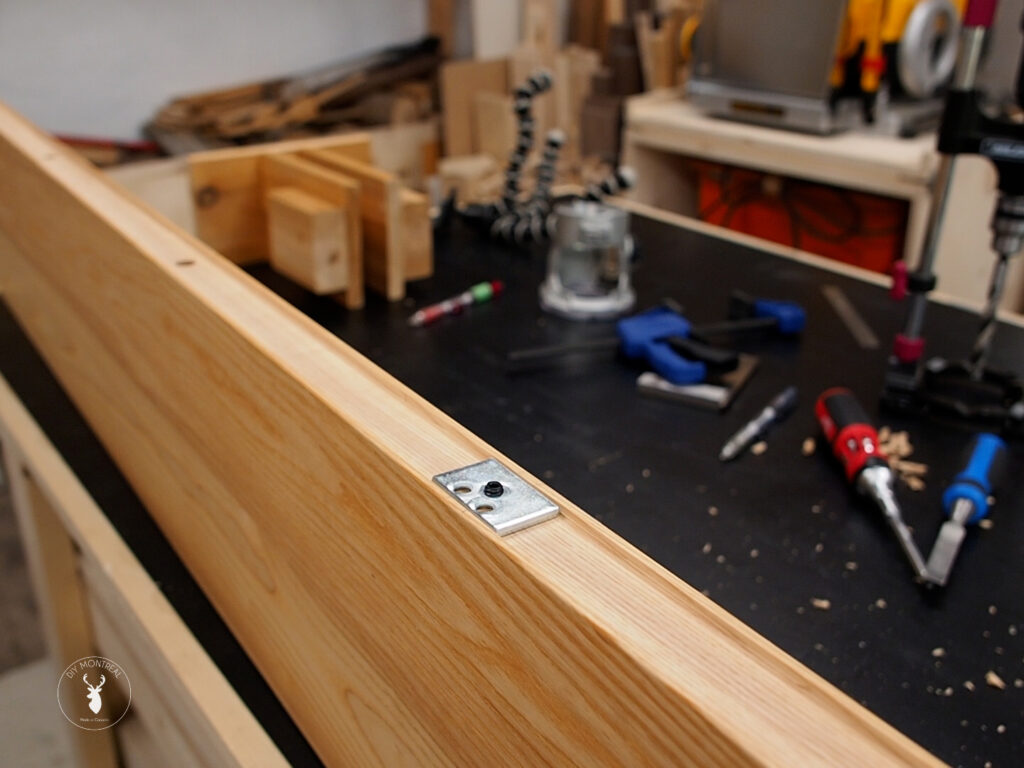
Step 4: Install Floating Shelf
Now comes the moment of truth… Will the pins line up with the holes in the shelves?
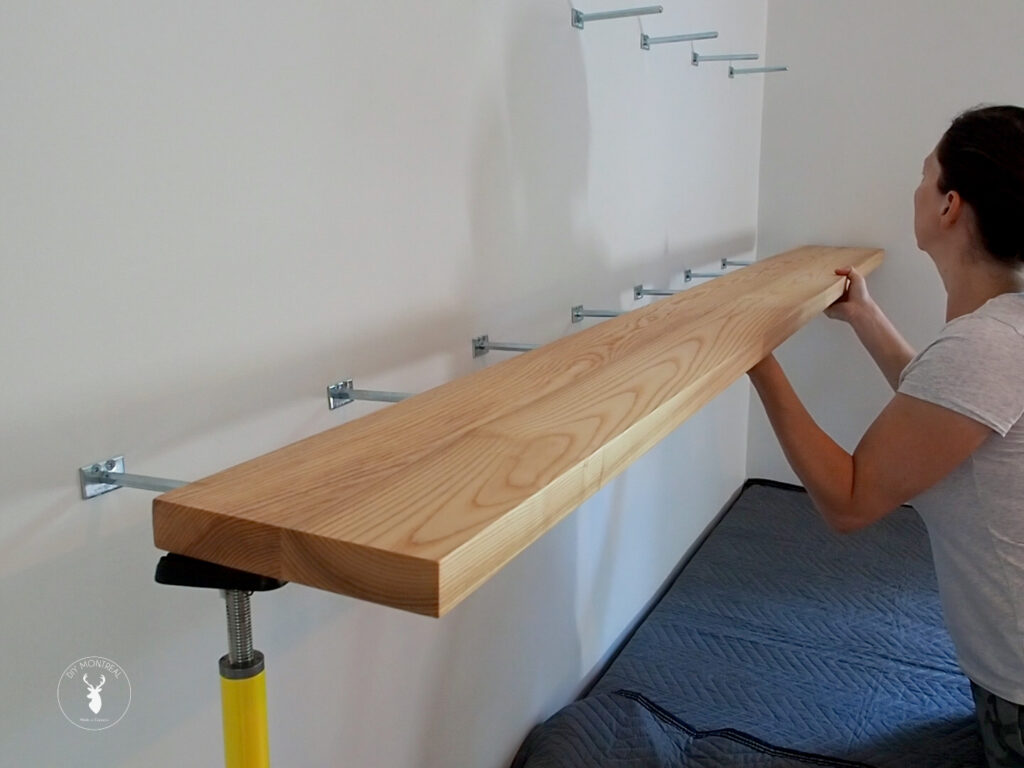
If you did your prep work right, everything should be just fine. The shelf might need a little (or a lot) of encouragement, but it will eventually fit. I used a small block of wood to protect the shelf while I tapped it in with the help of a rubber mallet. Eventually the shelf bottomed out against the wall and the satisfaction was oh so sweet.
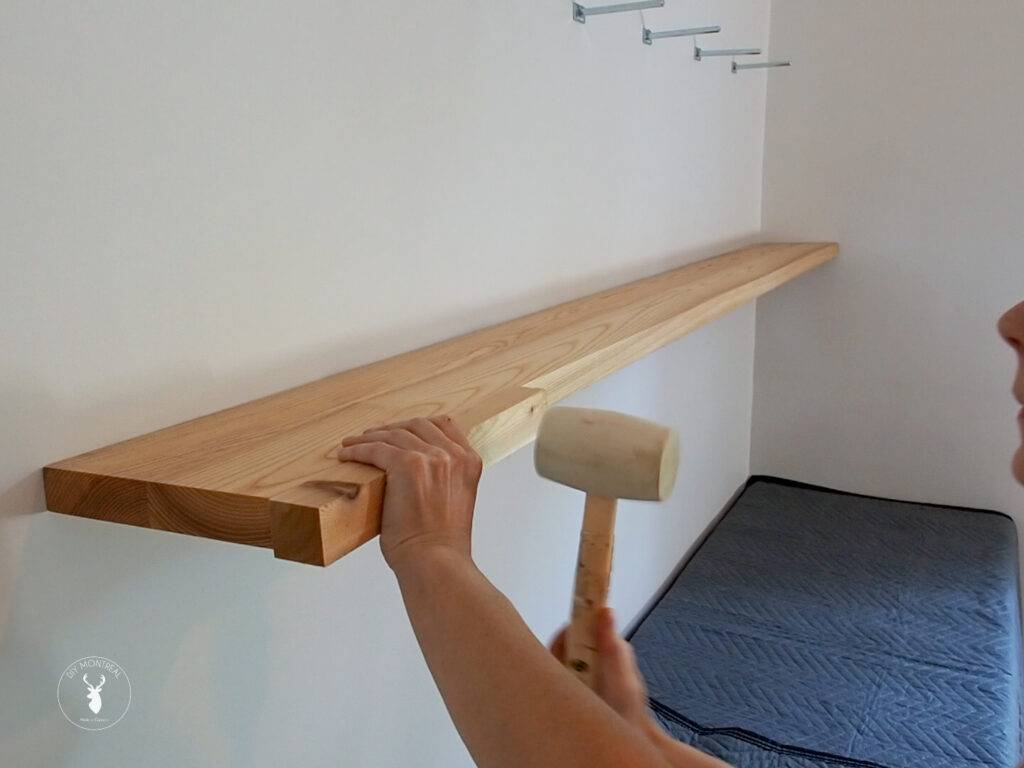
After getting the second shelf installed and loaded up, I took a step back to soak in the success. More than a year after I built my ash wood desk, the shelves were finally up and this DIY office was finally complete.
